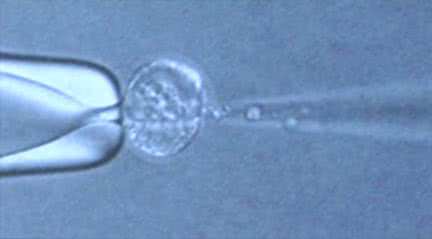Production of knock-out/knock-in chimeric mice by ES cells injection into mouse blastocysts
This service includes hormone preparation of female donors, mating of females with stud males, harvesting of blastocysts, ES cells’ injection into blastocysts, preparation of surrogate females by mating with vasectomized males and uteri transfer of injected blastocysts into pseudopregnant foster females. 3-4 transfers of approximately 10-12 injected blasocysts each will be performed. After litter is born and reaches 3 weeks of age, the Transgenic and Reproductive Technology Center personnel evaluates chimeras and records the data in the database. Please see the Guidelines for the Chimeric Coat Color Estimation. The Transgenic and Reproductive Technology Center personnel then weans the litter and submits foster mothers for blood serology. Upon receiving negative test results for all tested pathogens, chimeric pups will be transferred into the investigator’s room.
Procedure Outline
Case I
- The Investigator works on the project in his/her lab.
- The Investigator registers each clone to be injected on GTF website.
- Date of the injection is set by TGL.
- Investigator provides TGL with ES cells for injection on the scheduled day at about 12PM.
- Preparation of ES cells for blastocyst injection.
Case II
- The Investigator discusses design of the construct with GTF Director Chingwen Yang.
- The gene is targeted in the GTF.
- The Investigator registers each clone to be injected on GTF website.
- The date of the injection is set by TGL.
- The GTF provides the TGL with ES cells for injection on scheduled day at about 12PM.
In order to obtain a password for the GTF database, please contact Flora at x8650.

E5 cells injected into mouse blastocyst